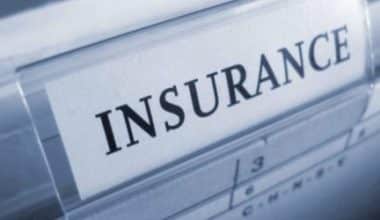Mortgage insurance premiums and private mortgage insurance enable lenders to make house loans to consumers who would not otherwise be able to do so. Mortgage insurance accomplishes this by shielding lenders from losses that may occur if a borrower defaults on a loan.
There are two types of mortgage insurance that sound the same but are not. The mortgage insurance premium is required for FHA loans. When you use an FHA loan to purchase a home and do not have at least 20% down, mortgage lenders ask you to pay an FHA mortgage insurance premium (MIP). The MIP protects them from loss if you fail to repay the loan. Mortgage insurance may be required when you obtain a loan to acquire a home as well as when you refinance.
A mortgage insurance premium, or MIP, is simply the mortgage insurance on an FHA loan. When a borrower makes a minimal down payment, mortgage insurance helps to offset the lender’s risk because low down payments increase the amount of money your lender loses if you default on your mortgage (lower down payment = greater loan).
Mortgage insurance is required for all FHA home loans since FHA mortgages allow for down payments as low as 3.5 percent for individuals with credit scores as low as 580.
PMI vs. MIP (Private Mortgage Insurance)
Mortgage insurance is referred to as private mortgage insurance on a typical mortgage (PMI). Borrowers with standard mortgages will be required to pay PMI only if their down payment is less than 20%.
In contrast, FHA loans require borrowers to pay mortgage insurance regardless of the size of their down payment. Both MIP and PMI protect the lender in the event that the borrower defaults on their loan.
Mortgage Insurance premium for FHA loan
The upfront mortgage insurance premium is a significant distinction between FHA and conventional loan mortgage insurance standards. Every person who purchases a home with an FHA loan must pay an upfront charge, which is now 1.75 percent of the home’s purchase price. That implies that if you buy a $250,000 house, you must pay an upfront premium of $4,375. There are no upfront mortgage insurance premiums with conventional loans.
The monthly insurance premiums are another significant distinction between MIP and PMI. Anyone who purchases a home with an FHA loan must also pay monthly insurance premiums (MIP). MIP costs vary according to the period of your mortgage, the amount of your base loan, and your loan-to-value ratio (LTV). While the cost of the annual premium varies depending on the borrower, the annual cost of MIP typically ranges between 0.45 percent and 1.05 percent of the loan amount.
The same holds true when refinancing an FHA loan. When you refinance with an FHA loan, you must pay both upfront and annual mortgage insurance premiums.
Private mortgage insurance for conventional loans.
In contrast to FHA loans, not everyone who obtains a conventional loan is required to pay for mortgage insurance. If you make a down payment of 20% or more, you will not be required to pay PMI. If you put down less than 20%, your lender will almost certainly require you to pay for private mortgage insurance.
Your credit score and the size of your down payment influence the cost of PMI. The cost varies depending on the borrower, but it typically ranges between 0.5 and 2 percent of the loan amount.
When refinancing a traditional loan, the conditions are similar. You must have 20% equity in your property or you will most likely be compelled to pay private mortgage insurance.
Is it more expensive to have MIP or PMI?
This is a difficult topic to answer because the cost of mortgage insurance premiums and private mortgage insurance varies from buyer to buyer. The amount of money you borrow has a big impact on the cost of mortgage insurance, and if you borrow $400,000, you’ll likely pay more than if you borrow $200,000. The length of time you must pay for mortgage insurance also has an impact on how much it will cost you over the life of the loan. When making your decision, weigh all of the benefits and drawbacks of conventional and FHA loans.
MPI vs. MIP (Mortgage Protection Insurance)
Mortgage protection insurance is not the same as MIP or PMI (MPI). The only coverage that benefits the homeowner among these three forms of insurance is MPI.
In the event of the borrower’s death, MPI will pay off the loan so that the other household members are not forced to take over the mortgage or lose the house. As a result, MPI is regarded to be a sort of life insurance.
Even though borrowers pay the premiums, MIP and PMI solely benefit the lender.
What Factors Influence the Mortgage Insurance Premium?
With one exception, all FHA mortgage customers will pay 1.75 percent of the loan amount in upfront MIP (UFMIP). While UFMIP is required at closing, this one-time payment can be financed, which means the UFMIP can be included in the loan amount and the borrower does not need to bring this cash to the closing table.
Borrowers’ annual premiums will also be applied to their monthly mortgage payments. Annual premiums can range from 0.45 to 1.05 percent of the loan amount, depending on the amount borrowed, the amount put down, and the length of the loan term.
Borrowers who are doing an FHA Streamline refinance on an FHA loan that was endorsed before June 1, 2009, are exempt from this rule. These borrowers will pay 0.01 percent of the loan amount in UFMIP. Furthermore, their annual MIP will be 0.55 percent of the loan amount.
If you’re wondering if you qualify for this exception, keep in mind that your endorsement date isn’t the same as your closure date. Endorsement usually occurs immediately after closing. If you are unsure of your endorsement date, you must contact the FHA.
If you are not in this category, the amount you will pay for annual mortgage insurance on your FHA loan will be determined by a number of variables.
Calculating Your Mortgage Insurance Premium
Your annual premium will be distributed evenly across your monthly mortgage payments.
Assume you’re getting a $200,000 30-year FHA loan with a 3.5 percent down payment. In this case, your yearly MIP rate would be 0.85% of your loan amount or $1,700 per year. This means that around $142 of your monthly mortgage payment will go toward this annual premium.
How long do MIP payments last?
MIP may be deleted in specific circumstances. Many FHA borrowers, however, will pay MIP for the life of their loans.
- If you placed a 10% down payment or more, you may be able to have MIP removed after 11 years of payments.
- If you got your loan before June 3, 2013, and you have 22 percent equity in your house, you may be eligible for cancellation.
So, if you have at least 20% equity in your property but aren’t qualified for MIP removal, your best choice may be to refinance into a conventional loan if it makes sense for your present financial circumstances. You will not be required to acquire mortgage insurance if you refinance into a conventional loan and maintain at least 20% equity in your house.
Qualified Mortgage Insurance Premiums Taxation
Every year, your lender is required to provide you and the Internal Revenue Service Form 1098 Mortgage Interest Statement (IRS). This form summarizes your mortgage payments during the previous year and may have an impact on your income tax. Box 5 of the form will contain the total amount of MIP or PMI premiums. You must itemize your deductions on Schedule A under the interest paid section to claim a deduction for any form of mortgage insurance.
Because of the Tax Cuts and Jobs Act of 2017, the deduction for these premiums terminated on December 31, 2017. The Further Consolidated Appropriations Act of 2020, however, was passed, and Congress extended the deduction through December 31, 2020. That is, the deduction was available for the 2019 and 2020 tax years, as well as retrospectively for 2018.
Avoiding FHA Mortgage Insurance Premium
Mortgage insurance is required if you use an FHA loan program. Mortgage insurance is required for all FHA loans, either for the life of the loan or for a specified number of years. You can avoid FHA mortgage insurance by doing the following:
#1. Using a different lending program
Getting a conventional loan with a 20% down payment is one option, but there are others. Accepting an FHA loan and the MIP that comes with it, then refinancing into a non-FHA loan once you’ve established enough equity in your house, is one alternative.
#2. Obtaining a lender-paid mortgage insurance (LPMI) loan
If you are unable or unwilling to make a 20% down payment, LPMI may be an option. In exchange for a higher interest rate, the lender pays the PMI with this form of a loan.
#3. Investigating a piggyback loan
With this sort of loan, you make a 10% down payment and then obtain a second mortgage to add another 10% to your down payment. You end up with a total down payment of 20%, avoiding PMI, but you must repay two loans.
#4. Investigating special programs
Some programs allow borrowers to make a minimal down payment without incurring PMI. These range from VA loans (for eligible service members) to programs offered directly by major banks and lenders.
How to Remove FHA Mortgage Insurance
Paying for FHA mortgage insurance for 11 years or more may appear to be a burden, but the expenditure does not have to persist indefinitely.
According to Gary Acosta, co-founder, and CEO of the National Association of Hispanic Real Estate Professionals, many borrowers use FHA loans as a stepping stone to assist them in achieving their dream of homeownership. Following that, they work to improve their credit ratings. Hence, they accumulate more equity in their homes in order to refinance out of their FHA loan and into a conventional loan with better conditions.
“The FHA is a great initial loan, but it can be helpful to refinance out of it at some time for reduced monthly payments, including no [mortgage insurance premiums] or PMI,” Acosta explains.
It is also feasible to avoid FHA mortgage insurance by paying down your mortgage. However, this can be time-consuming and costly. Before you pay off your loan, consider the financial benefits and drawbacks.
How Can I Tell if I’ve Made Mortgage Insurance Premium Payments?
Form 1098 lists the mortgage insurance premiums that were paid throughout the year. After the conclusion of the tax year, your lender should send you this form.
What Distinguishes Insurance from Mortgage Insurance?
While homeowners insurance safeguards your house, and personal property, and offers liability protection against covered claims, mortgage insurance pays your lender if you fall behind on your mortgage.
What Is Covered by Mortgage Insurance?
If you, the borrower, are unable to make your loan payments and the property is sold for less than the outstanding loan total, the lender may purchase Lenders Mortgage Insurance (LMI) to protect itself against the risk of not recovering the outstanding loan balance.
What Occurs if Mortgage Insurance Is Not Purchased?
The purchase of building insurance for your home is not legally required. However, if you’re purchasing your house with a mortgage, your lender may not release your loan until you have buildings insurance in place.
Does Life Insurance Pay for a Mortgage?
Mortgage protection insurance, also known as mortgage life insurance and mortgage protection life insurance, is a policy that, as its name suggests, pays off the remaining balance of your mortgage should you pass away. While your premiums keep the same as you pay down your mortgage, the death benefit of an MPI coverage often diminishes.
Conclusion
Though MIP may raise your monthly mortgage payments, it will also make homeownership more accessible to people who cannot afford some of the expensive upfront expenditures.
If you’re thinking about getting an FHA loan, you should consider all of the charges involved. You may decide that MIP is worthwhile in order to keep your down payment low. You may also opt to wait and save your money in order to qualify for an insurance-free loan. Everything is dependent on what makes the most sense for you.
Mortgage Insurance Premium FAQs
How much is the mortgage insurance premium?
Regardless of the value of a home, most mortgage insurance premiums range from 0.5 percent to 5 percent of the original amount of a mortgage loan per year. That means that if a borrower borrowed $150,000 and the yearly premiums were 1%, the borrower would have to pay $1,500 ($125 per month) to insure their mortgage.
Who pays mortgage insurance premium?
Homeowners who obtain loans guaranteed by the Federal Housing Administration must pay a mortgage insurance premium (MIP) (FHA). 3. MIPs are used by FHA-backed lenders to protect themselves from higher-risk borrowers who are more likely to default on loans. Mortgage insurance is required for all FHA borrowers.
How does FHA MIP refund work?
You will receive a refund of 58 percent of your upfront cost if you refinance your FHA loan within 12 months. If you wait three years to refinance, you will only receive a 10% refund on your initial payment. You will not receive your return in cash.
Related Articles
- What Is Mortgage Insurance and When Do You Need It?
- No Down Payment Mortgage: Getting a Mortgage With No Down Payment In 2023
- Secondary Mortgage Market: Step By Step Guide On How It Works
- How To Buy A House With Bad Credit: Detailed Guide In 2023
- Zillow Mortgage Calculator: How Accurate is Zillow Mortgage Calculator? (+ Quick Tips)






